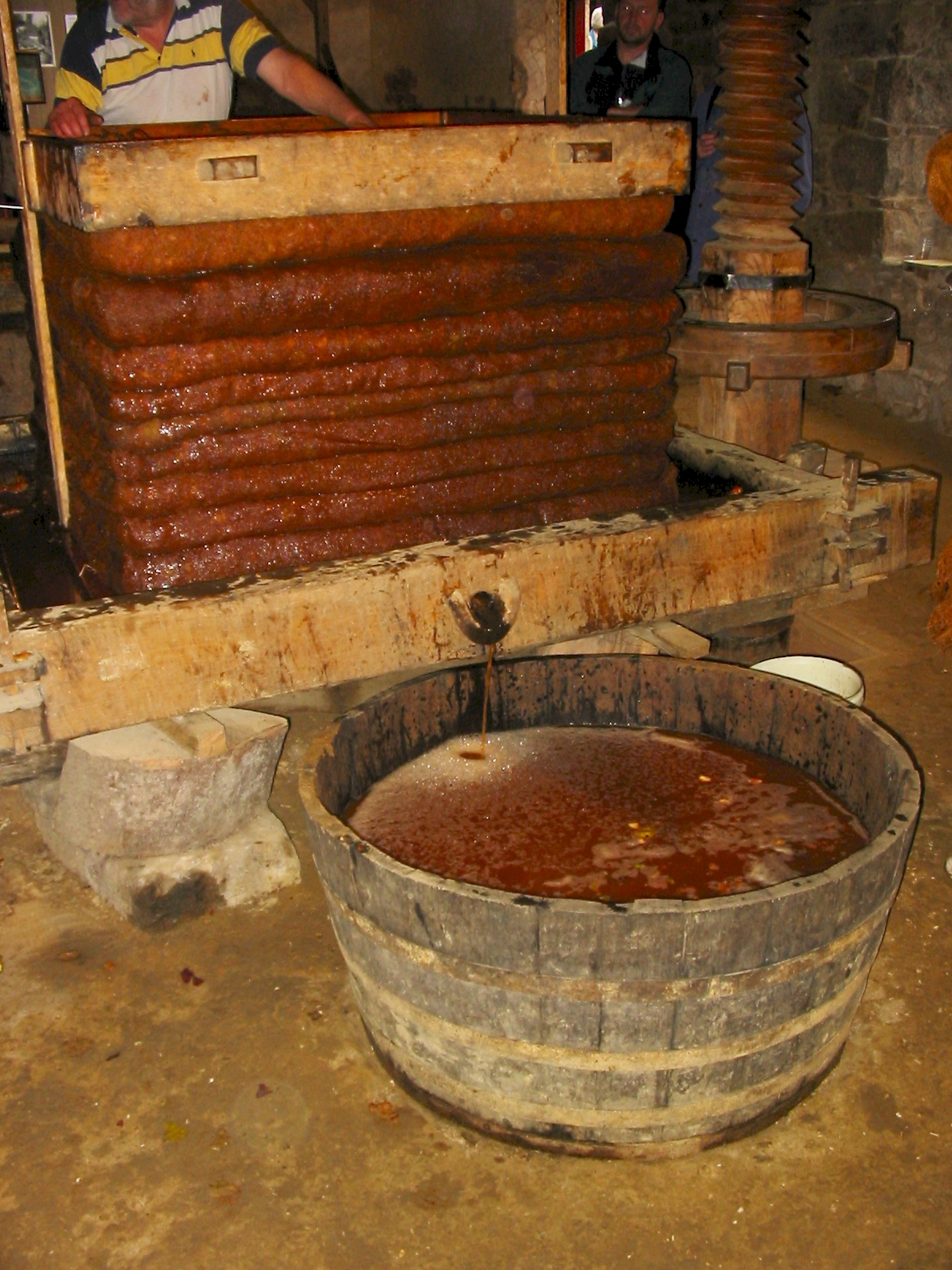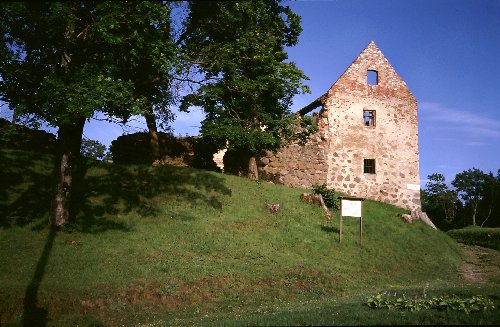|
Kabile Manor
Kabile Manor ( lv, Kabiles muižas pils german: Kabillen) is a manor house located in Kuldīga Municipality, Kabile Parish, in the historical region of Courland, in western Latvia. History Built in Baroque style between 1734 and 1740 for Eleonora von Behr, it was remodeled in the 1860s. Unique 18th century interiors of manor has been preserved. Vaulted cellars of Kabile Manor has been storing wine since manor house has been built. Now manor has fully operational cidery and winery. Lauku celotajs See also *List of castles in Latvia
This is the List of castles in Latvia, which includes fortified residences of Western Europe ...
[...More Info...] [...Related Items...] OR: [Wikipedia] [Google] [Baidu] |
Kuldīga Municipality
Kuldīga Municipality ( lv, Kuldīgas novads) is a municipality in Courland, Latvia. The municipality was formed in 2009 by merging Ēdole parish, Gudenieki parish, Īvande parish, Kabile parish, Kurmāle parish, Laidi parish, Padure parish, Pelči parish, Renda parish, Rumba parish, Snēpele parish, Turlava parish, Vārme parish and Kuldīga town. The administrative centre is Kuldīga. As of 2020, the population was 22,028. During the 2021 Latvian administrative reform, the previous municipality was merged with Alsunga Municipality and Skrunda Municipality. The new municipality now fully corresponds with the area of the former Kuldīga District. History Kuldīga municipality was established on July 1, 2009. Before that, it was a part of Kuldīga District, which also included Alsunga and Skrunda districts. Kuldīga district was established in 1949. From 1952 to 1953, Kuldīga district was included in Liepāja District. From 1819 to 1949, most of Kuldīga parish be ... [...More Info...] [...Related Items...] OR: [Wikipedia] [Google] [Baidu] |
Latvia
Latvia ( or ; lv, Latvija ; ltg, Latveja; liv, Leţmō), officially the Republic of Latvia ( lv, Latvijas Republika, links=no, ltg, Latvejas Republika, links=no, liv, Leţmō Vabāmō, links=no), is a country in the Baltic region of Northern Europe. It is one of the Baltic states; and is bordered by Estonia to the north, Lithuania to the south, Russia to the east, Belarus to the southeast, and shares a maritime border with Sweden to the west. Latvia covers an area of , with a population of 1.9 million. The country has a temperate seasonal climate. Its capital and largest city is Riga. Latvians belong to the ethno-linguistic group of the Balts; and speak Latvian, one of the only two surviving Baltic languages. Russians are the most prominent minority in the country, at almost a quarter of the population. After centuries of Teutonic, Swedish, Polish-Lithuanian and Russian rule, which was mainly executed by the local Baltic German aristocracy, the independent R ... [...More Info...] [...Related Items...] OR: [Wikipedia] [Google] [Baidu] |
Baroque (architecture)
Baroque architecture is a highly decorative and theatrical style which appeared in Italy in the early 17th century and gradually spread across Europe. It was originally introduced by the Catholic Church, particularly by the Jesuits, as a means to combat the Reformation and the Protestant church with a new architecture that inspired surprise and awe. It reached its peak in the High Baroque (1625–1675), when it was used in churches and palaces in Italy, Spain, Portugal, France, Bavaria and Austria. In the Late Baroque period (1675–1750), it reached as far as Russia and the Spanish and Portuguese colonies in Latin America. About 1730, an even more elaborately decorative variant called Rococo appeared and flourished in Central Europe. Baroque architects took the basic elements of Renaissance architecture, including domes and colonnades, and made them higher, grander, more decorated, and more dramatic. The interior effects were often achieved with the use of ''quadratura'', or ... [...More Info...] [...Related Items...] OR: [Wikipedia] [Google] [Baidu] |
Kuldīga Municipality
Kuldīga Municipality ( lv, Kuldīgas novads) is a municipality in Courland, Latvia. The municipality was formed in 2009 by merging Ēdole parish, Gudenieki parish, Īvande parish, Kabile parish, Kurmāle parish, Laidi parish, Padure parish, Pelči parish, Renda parish, Rumba parish, Snēpele parish, Turlava parish, Vārme parish and Kuldīga town. The administrative centre is Kuldīga. As of 2020, the population was 22,028. During the 2021 Latvian administrative reform, the previous municipality was merged with Alsunga Municipality and Skrunda Municipality. The new municipality now fully corresponds with the area of the former Kuldīga District. History Kuldīga municipality was established on July 1, 2009. Before that, it was a part of Kuldīga District, which also included Alsunga and Skrunda districts. Kuldīga district was established in 1949. From 1952 to 1953, Kuldīga district was included in Liepāja District. From 1819 to 1949, most of Kuldīga parish be ... [...More Info...] [...Related Items...] OR: [Wikipedia] [Google] [Baidu] |
Courland
Courland (; lv, Kurzeme; liv, Kurāmō; German and Scandinavian languages: ''Kurland''; la, Curonia/; russian: Курляндия; Estonian: ''Kuramaa''; lt, Kuršas; pl, Kurlandia) is one of the Historical Latvian Lands in western Latvia. The largest city is Liepāja, the third largest city in Latvia. The regions of Semigallia and Selonia are sometimes considered as part of Courland as they were formerly held by the same duke. Geography and climate Situated in western Latvia, Courland roughly corresponds to the former Latvian districts of Kuldīga, Liepāja, Saldus, Talsi, Tukums and Ventspils. When combined with Semigallia and Selonia, Courland's northeastern boundary is the Daugava, which separates it from the regions of Latgale and Vidzeme. To the north, Courland's coast lies along the Gulf of Riga. On the west it is bordered by the Baltic Sea, and on the south by Lithuania. It lies between 55° 45′ and 57° 45′ North and 21° and 27° East. The name is also ... [...More Info...] [...Related Items...] OR: [Wikipedia] [Google] [Baidu] |
Wikimapia
Wikimapia is a geographic online encyclopedia project. The project implements an interactive "clickable" web map that utilizes Google Maps with a geographically-referenced wiki system, with the aim to mark and describe all geographical objects in the world. Wikimapia was created by Alexandre Koriakine and Evgeniy Saveliev in May 2006. The data, a crowdsourced collection of places marked by registered users and guests, has grown to just under 28,000,000 objects , and is released under the Creative Commons license, Creative Commons License Attribution-ShareAlike (CC BY-SA). Although the project's name is reminiscent of that of Wikipedia, and the creators share parts of the "wiki" philosophy, it is not a part of the non-profit Wikimedia Foundation family of wikis. Since 2018, following years of declining popularity, the site has gone nearly inactive with the site's owners having been unable to pay for the usage of Google Maps and the site's social media accounts having remained de ... [...More Info...] [...Related Items...] OR: [Wikipedia] [Google] [Baidu] |
Baroque Architecture
Baroque architecture is a highly decorative and theatrical style which appeared in Italy in the early 17th century and gradually spread across Europe. It was originally introduced by the Catholic Church, particularly by the Jesuits, as a means to combat the Reformation and the Protestant church with a new architecture that inspired surprise and awe. It reached its peak in the High Baroque (1625–1675), when it was used in churches and palaces in Italy, Spain, Portugal, France, Bavaria and Austria. In the Late Baroque period (1675–1750), it reached as far as Russia and the Spanish and Portuguese colonies in Latin America. About 1730, an even more elaborately decorative variant called Rococo appeared and flourished in Central Europe. Baroque architects took the basic elements of Renaissance architecture, including domes and colonnades, and made them higher, grander, more decorated, and more dramatic. The interior effects were often achieved with the use of ''quadratura'', or ... [...More Info...] [...Related Items...] OR: [Wikipedia] [Google] [Baidu] |
Cidery
A cider mill, also known as a cidery, is the location and equipment used to crush apples into apple juice for use in making apple cider, hard cider, applejack, apple wine, pectin and other products derived from apples. More specifically, it refers to a device used to crush or grind apples as part of the overall juice production. The mills used to manufacture, ferment, store, and ship juice products are usually located near apple orchards. Historically, the types of structure and machinery have varied greatly—including horse powered, water driven, and machine operated mills. The presses can be fixed or portable. Cider mills were subject to legal proceedings in New York state in the 1800s over whether they were "fixed to freeholds" and other cases addressing legal designation as to what kind of property a cider mill is. Use Cider-making takes place in numerous countries and regions. As with the cider itself, the various techniques used in milling and pressing the apples vary ... [...More Info...] [...Related Items...] OR: [Wikipedia] [Google] [Baidu] |
Winery
A winery is a building or property that produces wine, or a business involved in the production of wine, such as a wine company. Some wine companies own many wineries. Besides wine making equipment, larger wineries may also feature warehouses, bottling lines, laboratories, and large expanses of tanks known as tank farms. Wineries may have existed as long as 8,000 years ago. Ancient history The earliest known evidence of winemaking at a relatively large scale, if not evidence of actual wineries, has been found in the Middle East. In 2011 a team of archaeologists discovered a 6000 year old wine press in a cave in the Areni region of Armenia, and identified the site as a small winery. Previously, in the northern Zagros Mountains in Iran, jars over 7000 years old were discovered to contain tartaric acid crystals (a chemical marker of wine), providing evidence of winemaking in that region. Archaeological excavations in the southern Georgian region of Kvemo Kartli uncovered evidenc ... [...More Info...] [...Related Items...] OR: [Wikipedia] [Google] [Baidu] |
List Of Castles In Latvia
This is the List of castles in Latvia, which includes fortified residences of Western European conquerors built in the area of present-day Latvia before the 17th century. There are about 140 medieval castles in the area, therefore this list is not complete. After the name of the castle comes the year of construction and a short description of its present-day condition. Table of contents Courland Zemgale Vidzeme Latgale See also *List of castles *List of castles in Estonia *List of palaces and manor houses in Estonia *List of palaces and manor houses in Latvia * List of hillforts in Latvia *List of castles in Lithuania Additional information References Sources * * External links Ambermarks - Medieval castles of Latvia - list {{List of castles in Europe * Latvia Cas Lists of castles by country Castles A castle is a type of fortified structure built during the Middle Ages predominantly by the nobility or royalty and by military orders. Scholars debate the ... [...More Info...] [...Related Items...] OR: [Wikipedia] [Google] [Baidu] |





